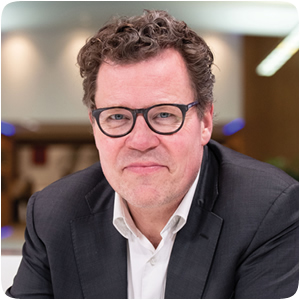 By 2030, Aarhus, Denmark's second largest city, will be the home of EU's largest geothermal district heating plant. It will meet 20 percent of Aarhus' district heating needs, equivalent to heating some 36,000 households.
By 2030, Aarhus, Denmark's second largest city, will be the home of EU's largest geothermal district heating plant. It will meet 20 percent of Aarhus' district heating needs, equivalent to heating some 36,000 households.
Now similar projects are underway in other Danish cities including capital Copenhagen. My objective however, would be to elevate the significance of these projects beyond Denmark and onto the European stage, harnessing the green potential of geothermal energy in the crucial battles against climate change and ensuring energy security within the EU.
Geothermal energy serves as a complementary power source to wind and solar energy, as it can operate as a reliable baseload supply regardless of weather conditions. Consequently, incorporating geothermal energy into the European energy mix is pivotal to achieving the EU's energy goals.
Raising awareness and promoting geothermal energy at the political level within the EU is essential. Despite its enormous potential, geothermal energy often goes unnoticed in Brussels and its surrounding institutions.
Establishing a strong political position within the European Parliament will drive the development of a comprehensive EU strategy for geothermal energy, incentivizing private investments, facilitating access to subsurface data, and expanding the use of geothermal energy within the European district heating network.
Just as wind turbines harness energy from the wind, and solar cells harness energy from the sun, geothermal energy utilizes heat from the Earth's interior. The Earth's core is over 5,000 degrees Celsius, constituting an inexhaustible source of thermal energy that we currently only exploit in a few places on the planet.
The most well-known example is arguably Iceland, where heat bubbles just below the Earth's surface and forms the core of Iceland's energy system.
The heat is not readily accessible in many places, but large parts of Europe lie above geothermal heat sources, and the hot geothermal water is typically found 2-3 km below the surface. At the same time, 3 out of 4 Europeans live in urban areas, and if you have a local heat source combined with high population density, the conditions are nearly optimal for district heating.
Under the right conditions, district heating is the most efficient provider of affordable green heat to consumers. At the same time, Europe finds itself in a situation where we are constantly dependent on enormous amounts of imported fossil energy, especially from the Russia. In the coming years, Europe will need all the green energy we can get our hands on, and geothermal energy is an excellent complement to the expansion of wind and solar energy because energy production is not dependent on whether the wind blows or the sun shines.
Geothermal energy can readily replace some of the coal in the major district heating networks in Germany, Poland, Hungary, Slovakia, and Bulgaria – all countries that are particularly dependent on imported fossil fuels. These countries struggle to make their district heating green while keeping the heating prices low.
In light of this, it is easy to see why geothermal energy is a natural ingredient in the European energy mix. When the technology is not widely spread, it is primarily because district heating companies have been concerned about the financial risks associated with geothermal projects, the prospect of drilling projects ending up without finding hot water.
The extraction of geothermal heat is technically complex, and expertise in subsurface operations is not district heating companies' strongest suit. Typically, drilling engineers, geologists, and reservoir engineers have been employed in the oil and gas industry, not in the district heating sector.
The reason geothermal projects are currently gaining momentum in Denmark is that the technical challenges have been solved with the help of specialists from gas extraction in the North Sea. The economic challenge has been addressed through legislation that allows for private investments in geothermal energy for district heating, while also protecting consumers from the financial risks associated with geothermal projects.
This is the kind of political attention, I want to raise in the EU. Geothermal energy has tremendous green potential, but it simply is not sufficiently visible on the EU radar. In practical terms, it is initially about creating awareness about the possibilities within geothermal energy, and then my ambition is for the European Parliament to establish its own political position in this field. Ultimately, the European Commission holds the key to getting geothermal energy at work for a greener Europe. Ultimately, we need European legislation promoting energy transition through geothermal-based district heating. This can include incentives for private investments, access to subsurface data, and the general expansion of the European district heating network for all renewable energy sources.
We generate lots of renewable energy by water, wind and sun. The circle of renewables is on complete when we include earth-based renewables as well.